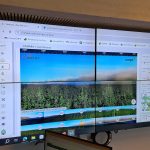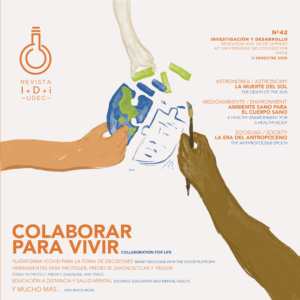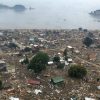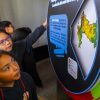By: Constanza Ruiz Valderrama, Journalist – Department of Oceanography / comunicaciones@oceanografia.udec.cl
Images: Courtesy of the Department of Oceanography
Leer en español
Did you know that there are also forests in the sea? These are not submerged trees, but ecosystems formed by macroalgae that, like land forests, perform photosynthesis.
These forests under the sea capture “blue carbon.” They absorb CO₂ in the coastal area, produce oxygen, and protect the coasts from tidal waves. In Chile, they are formed by brown macroalgae such as Macrocystis pyrifera and Lessonia spp., which can reach tens of meters. They are found from Arica to Cape Horn, in rocky substrates and cold waters, from the intertidal to approximately 40 meters deep, depending on light and substrate.
Southern Chile has the world’s most pristine underwater forests. Since 2013, the Bosque Calabacillo Marine Sanctuary has protected one of the most valuable ecosystems in the O’Higgins Region, formed by the brown algae Macrocystis pyrifera.
These forests not only generate benefits under the sea. They also boost coastal economies by supporting local fisheries, such as king crab, crab, lobster, urchins, and mollusks, and promoting tourism associated with diving and nature. Macroalgae are used in food, cosmetics, pharmaceuticals, supplements, and industrial products. They are considered “superfoods” because of their taste, nutritional contribution, and low environmental impact.
However, they face increasing threats: Illegal extraction, rising temperatures, pollution, and weakening regeneration capacity. Faced with these, science and society are working together to find solutions.

Knowing them to care for them
One of the leading promoters of knowledge from the University of Concepción in this area is Dr. Erasmo Macaya Horta, phycologist and academic of the Department of Oceanography of the Faculty of Natural and Oceanographic Sciences. From the Laboratory of Algal Studies (Algalab), he leads key research in macroalgae ecology, diversity, genetics, and biogeography. He is also part of the IUCN Group of Specialists in Marine Algae, which seeks to include these species in the Red List of Threatened Species, making their role in conservation visible. Recently, together with a group of professionals from different disciplines in Chile and Spain, they were awarded a project that seeks to evaluate the role of brown algae in the coastal economies of the past. In these economies, algae would have been used as food and fuel and even included in funeral rituals.
“Education is key to protecting our underwater forests. Many people are still unaware of their existence and their fundamental role at an ecological and productive level. These ecosystems are home to a great diversity of species with different life cycles, so responsible extraction is essential. Although there are prohibitions, they are often not respected. That is why it is urgent to promote citizen awareness in addition to greater supervision. Only by valuing what we have will we be able to truly preserve it,” says Dr. Macaya.
In addition to his scientific work through various multidisciplinary research projects and works, he also stands out for his visual documentation of these ecosystems. He is helping to bring knowledge closer to the general public by contributing accessible and educational publications such as A Photographic Guide to the Marine Algae of Chile and the Guide to Subantarctic Macroalgae, which are freely available online.
Protecting underwater forests requires innovation, political will, and active participation of coastal communities. Rescuing ancestral knowledge, combined with science and technology, can open new ways of sustainable management, ecological restoration, and local economic development. In a climate crisis scenario, these ecosystems represent a concrete opportunity to move towards a more balanced, sea-friendly future.
Download the graphic material.
Last modified: 3 de septiembre de 2025






